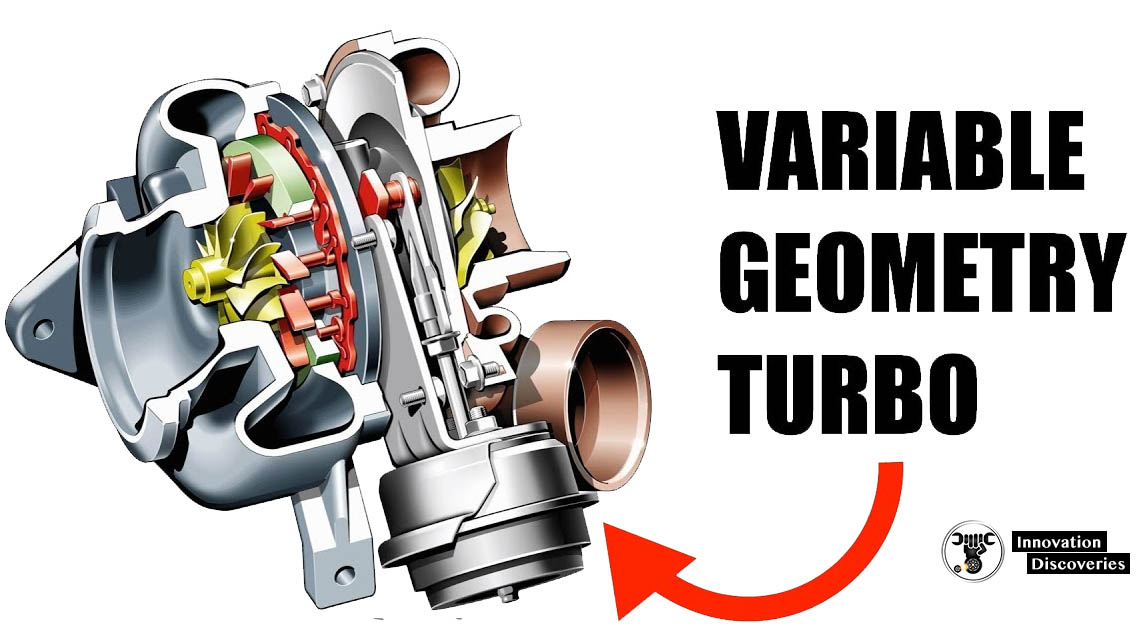WORKING PRINCIPLE
A turbocharger mainly consists of two main sections: the turbine and the compressor.
The turbine consists of a turbine wheel and the turbine housing whose purpose is to guide the exhaust gases into the turbine wheel.
The kinetic energy of the exhaust gases gets converted into the mechanical after striking it on turbine blades.
The exhaust outlet helps the exhaust gases to get exit from the turbine. The compressor wheel in the turbocharger is attached to a turbine with the help of steel shaft and as the turbine turns the compressor wheel, it draws the high-velocity, low-pressure air stream and converts it into high-pressure, low –velocity air stream.
This compressed air is pushed into the engine with the more quantity of fuel and hence produce more power.
Read More: Kinetic Energy Recovery System (KERS)
The waste exhaust gases of the engine are utilized to drive a turbine wheel, which is connected to a compressor wheel by a shaft.
Compressor or air wheel sucks in air through the air filters and passes this into the engine.
As the waste gases are expelled from the engine, they are directed to the turbine or hot wheel of the turbo and so completes the cycle.
1. Capture
Instead of escaping through the exhaust pipe, hot gases produced during combustion flow to the turbocharger.
Cylinders inside an internal combustion engine fire in sequence (not all at once), so exhaust exits the combustion chamber in irregular pulses.
Conventional single-scroll turbochargers route those irregular pulses of exhaust into the turbine in a way that causes them to collide and interfere with one another, reducing the strength of the flow.
In contrast, a twin-scroll turbocharger gathers exhaust from pairs of cylinders in an alternating sequence.
Read More: TWIN SCREW SUPERCHARGERS
2. Spin
The exhaust strikes the turbine blades, spinning them at up to 150,000 rpm. The alternating pulses of exhaust help eliminate turbo lag.
3. Vent
Having served their purpose, exhaust gases flow through an outlet to the catalytic converter, where they are scrubbed of carbon monoxide, nitrous oxides, and other pollutants before exiting through the tailpipe.
4. Compress
Meanwhile, the turbine powers an air compressor, which gathers cold, clean air from a vent and compresses it to 30 percent above atmospheric pressure, or nearly 19 pounds per square inch. Dense, oxygen-rich air flows to the combustion chamber.
The additional oxygen makes it possible for the engine to burn gasoline more completely, generating more performance from a smaller engine.
As a result, the Twin Power engine generates 30 percent more power than a non-turbocharged one of the same sizes.
It follows the following process
- The engine’s air intake sucks in cool air and sends to the compressor.
- The compressor compresses the incoming air and heats it up. It then blows out the hot air.
- The hot air cools down when passing through the heat exchanger and enters the cylinder’s air intake.
- The cold air burns inside the combustion chamber at a faster rate because of carrying more oxygen.
- Due to the burning of more fuel, the energy output will be bigger faster, and the engine will be able to send more power to the wheels.
- Hot waste gasses will leave the chamber and blows past the turbine at the exhaust outlet.
- The turbine rotates at a high speed and spins the compressor too as both are mounted on the same shaft.
- The exhaust gasses leave the car through the exhaust pipe. They waste less energy than an engine not having a turbocharger.
TYPES OF TURBOCHARGER
Click 3rd page ———-






9 Comments